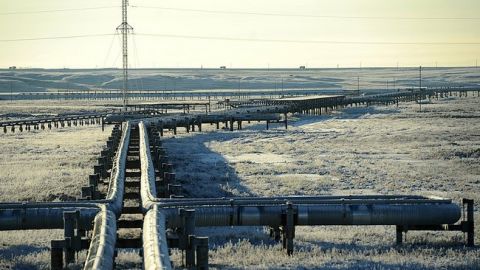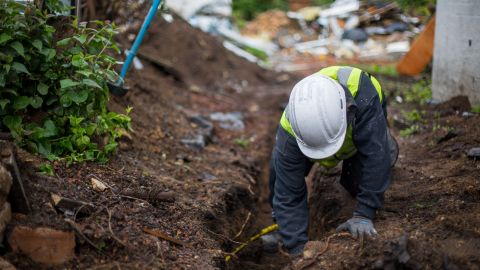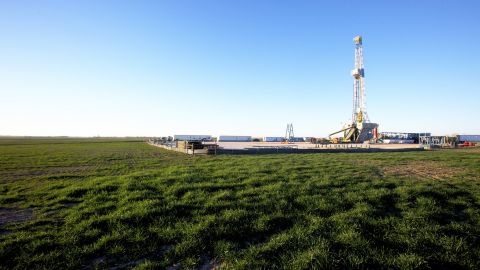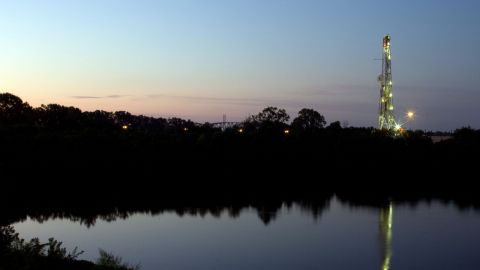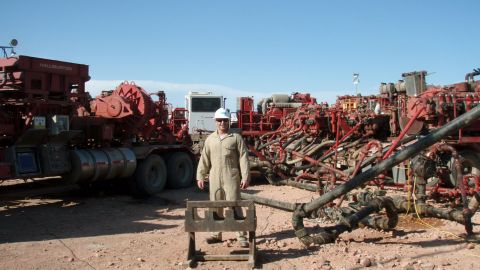AD READER: This episode of the sweaty penguin is brought to you by brunch. Want to eat breakfast late and get drunk before noon? Try brunch today
ETHAN: welcome to episode 112 of the sweaty penguin Antarctica’s hottest podcast. I’m your host Ethan Brown. Today we are talking about salt marshes not to be confused with salt Bay’s new Alter Ego he uses to sneak into the soccer matches he is banned from that would be salt x.
ETHAN: Now if you keep up with random holidays, and no one’s heard of yesterday was actually world Wetlands Day. Yesterday was also Groundhog Day National tatertot Day and Optimus day, which is ironic because Punxsutawney Phil was being a real pessimist when he said there’ll be six more weeks of winter. Come on, Phil haven’t yet heard of climate change. It’s going to be spring any day now.
ETHAN: But in honor of world Wetlands Day, we’ll be talking about one of the most important wetlands of the world that being salt marshes. Salt Marshes can be found in every continent except Antarctica, with 40% actually found right here in North America. In the US salt marshes are all along the coast, though most prominently found in the Gulf states. And these wetlands are essential, as they protect shorelines serve as the nursery sites for commercially important fish and shellfish and to store tons of carbon. But unfortunately, salt marshes are declining and climate change is making things worse. So let’s jump right in. We’ll discuss why salt marshes matter what threats they face and where we go from here.
ETHAN: The Sweaty Penguin is presented by Peril and Promise: a public media initiative from The WNET Group in New York, reporting on the issues and solutions around climate change. You can learn more at pbs.org/perilandpromise. If you want to take two minutes to help out The Sweaty Penguin, you can either leave us a five star rating and review or join our Patreon at patreon.com/thesweatypenguin. Doing either earns you a special shoutout at the end of the show; joining the Patreon gets you merch, bonus content, and a whole lot more.
ETHAN: But first, it’s time for salt marsh 101. Salt marshes are found along coasts and experience daily flooding and draining of saltwater brought in by the tides. The frequency and duration of the tidal flooding will vary depending on where a salt marshes located. For instance, Florida salt marshes are often flooded with wannabe reality TV stars and SoundCloud rappers like young salty. You can’t see on the script here but Young is spelt while you NJ and the S is $1 sign quality name. But salt marshes contain more intelligent life forms to you know like plants and animals. In fact, the plants that live in salty soil are actually called Halophytes, which comes from the Greek word Halo meaning assault and fight meaning plants. That’s right. A Halo fight isn’t just Spartan B 312 getting blasted with plasma fire by covenant Banshees and stabbed to death by Sangheili warriors in the Battle of Assad. I mean, I know his death led to the discovery of the halo of Ray but did Spartan be 312 really think he could take on an entire army of aliens? Come on man use your head. These Halo fights store carbon underground and build upon layers of dead organic plant material.
ETHAN: The soil in the marsh is made up of mud and peat. No, not the power couple name for Madonna and Pete Davidson. But I wouldn’t be surprised if that happens. P-E-A-T peat is partially decomposing waterlogged plant material that has very little oxygen and produces a rotten egg smell from the bacteria that grows in the oxygen depleted soils. As opposed to Pete Davidson, who is also decomposing waterlogged plant material that I assume produces a rotten egg smell. But that lack of oxygen in the soil slows down the decomposition rate of dead plants in the marsh, which means that all that plant material is preserved longer underground. It’s like me the morning after the Super Bowl, unable to move and covered in brown stuff. It’s been dip I swear. But carbon rich underground plant matter. Make salt marshes a carbon sink. In fact According to National Oceanic and Atmospheric Administration data, one mile of salt marsh stores the carbon equivalent of 76,000 gallons of gas annually. Of course, carbon dioxide is the primary greenhouse gas contributing to climate change. So by storing it away, salt marshes actually helped keep the planet cooler
ETHAN: And as sediments and Pete Davidson’s accumulate over time, salt marshes grow. This creates distinct areas in the marsh, defined by specific plant species, specifically by the high marsh and the low March. The low Marsh is the one closer to the title action and floods about two times per day. This frequent flooding brings in a steady supply of sediment, which makes the low Marsh grow really fast. The low Marsh is dominated by a taller salt adapted grass, such as salt marsh cordgrass, and the Atlantic northeast. And yes, if you were wondering, salt marsh cordgrass is the name I used on my first fake ID. What you have to be at least 16 to get a national parks pass. The high Marsh sets at a higher elevation and is flooded way less about once or twice a week. This part of the marsh has a larger variety of plants, including needle rush Marsh hay, sea lavender and pickled weed. Random fun fact salt marsh foragers actually use pickled weed and salads or to accompany freshly caught fish. That’s right coming this fall to Burger King.
Whopper whopper salt marsh whopper
Needlerush or cordgrass whopper
Sediment flood taste with pickleweed topper
I rule this day
Sea lavender, saltwort, glasswort, deep mud
Smells like old eggs but I want that
Very low marsh or high marsh whopper
Salt marsh whopper my way
You rule, if you order marsh hay
At BK, have it your way
You rule!
ETHAN: That’s right, you could get every Hallo fight on your Whopper. But beyond storing carbon and giving us the next big fast food craze, I hope so marshes provide a lot of benefits to humans. And let’s start with resilience to sea level rise. We’ve talked about sea level rise before and it’s happening for two primary reasons. One climate change warms ocean water causing it to expand and to warmer climates also lead to glaciers falling into the ocean, which is almost like dumping ice cubes in a glass of water. The extra volume pushes the water level up. That presents a lot of issues but for coastal communities surrounded by salt marshes, they’ve got a bit of help. Our expert this week is Dr. Sergio Fagherazzi, professor of Earth and environment at Boston University. According to Dr. Fagherazzi, salt marshes can essentially keep pace with rises in sea levels, and consequently, help protect inland communities.
- FAGERAZZI: So this is a unique ability to track sea level. So If sea level is rising, salt marshes can accumulate material on top of them creasing elevation at the same rate of sea level. This is what they’ve been doing for the last 3000 years. And why did they accumulate the material, very large fraction of this material is organic, organic roots and rhizomes and particles. So there’s a lot of carbon but typically 30% of a Marcia is organic material.
ETHAN: How are marshes accumulating all this material on top of them? Well, moving water can carry materials such as sand and plant matter along with it. When the marsh floods at high tide. All that moving water moves up on top of the marsh slows down and then all that soil and plant material gets dumped on top. Over time, the marsh accumulates enough material to reach an elevation equal to the average high tide. In other words, if the sea level rises, the marsh rises to you know Mother Nature is not happy with the ocean doing this though. I bet Mother Nature is standing on that Marsh shouting I’m not your garbage can you stupid kids.
ETHAN: Salt Marshes also helped coastal communities combat the issue of erosion.
- FAGERAZZI: Then it is a very interesting situation now because not only they store organic material But they’re also protected from erosion. So when we have hurricanes when we have storms, and we have a lot of waves eroding the shoreline, if we put these marshes in, we can actually decrease erosion and sometimes we can also decrease the flooding. If the salt marsh is very big it can also reduce flooding. So we can do two things. Now now the same time you can protect the the shoreline with the salt marshes and the same time we store organic matter. So that becoming a very important ecosystems.
ETHAN: And by protecting those shorelines, salt marshes also protect the economy. A 2020 Proceedings of the National Academy of Sciences study found among coastal us counties that face damage from tropical storms and hurricanes between 1996 and 2016. counties with more wetland coverage had far less property damage to the point that marshes were valued at about $695,000 per square mile during storms, which is pretty astounding. That’s almost as much as my rent for a studio apartment.
ETHAN: And not only that, salt marshes add to the economy by serving as a refuge and nursery habitat for over 75% of fishery species, including oysters, clams, crabs and shrimp. For example, 120 22 study and coastal management found that the average annual value of a salt marsh in Narragansett Bay, Rhode Island was about $2,537 per acre for non-carbon ecosystem services.
Yet another salt marsh superpower is their ability to absorb pollutants.
- FAGERAZZI: These wetlands are pretty good at absorbing pollutants or like like pesticides, fertilizers, because because they have all these plants now that they can and also the material the clay can absorb. I saw studies in which they were shown that even like the active material can be totally absorbed by wetlands. So in other places, engineers are using wetlands in a way to increase water quality, like in near near places were highly polluted you you will want to add a wetland there. So they’re amazing the environments that they can do lots of things all the things are called the ecosystem services now, what they can provide useful for humans, and there are a lot of them is pretty amazing how many there are particularly in a period of sea level rise is the perfect environment to contrast this level rising
ETHAN: That’s right, salt marshes can absorb radioactive material. Sure this shrimp start growing third eyes, but come on, it makes them taste better. That pollutant absorption has some pretty major perks though. According to the NOAA by helping to improve water quality. One acre of oyster reef provides $6,500 and denitrification services and with all those community benefits, I think one thing is crystal clear. If you degrade a salt marsh you are being ridiculously unfathomably shellfish.
ETHAN: Okay, that was the worst segue of all time, but it’s true salt marshes are under threat. A 2022 study in Nature estimated that salt marshes have lost about 145,284 hectares globally from 2000 to 2019. That’s about 427 Central parks, or about double the size of Singapore. And you know the old adage lose Singapore once shame on you lose Singapore twice. You might have ADHD. But sadly, this isn’t just losing your car keys. Over those two decades. The study estimated that nearly 18 million tonnes of carbon dioxide were released into the atmosphere, which is about the same as the annual emissions for the entire country of Mongolia. That’s right, Genghis Khan. You just got beat by salt marshes. Good luck winning that Halo fight.
ETHAN: So why are salt marshes declining? Well, there’s a few reasons and let’s start with ditching Just kidding, it’s not dingdong ditching its environmental ditching, although I guess they’re pretty similar. Instead of leaving a brown bag of poop and running away, you’re destroying important coastal ecosystems and running away. Let’s have a little history during the Great Depression, people weren’t too happy with all the mosquitoes around Well, they weren’t very happy at all. It was called the depression for a reason. But after an American Army doctor discovered that yellow fever and malaria were caused by mosquitoes and at 98. People were especially wary, and that doctor determined that one of the most effective methods of reducing mosquito populations was to drain standing water. Coastal communities demanded that the government do just that drain salt marshes in order to control mosquitoes. And while the US government can’t seem to drain the swamp in the 1930s, they did drain the marsh. Most of that ditching was done by the Civilian Conservation Corps or CCC, and at the time, the program appeared to be a win win less mosquitoes and jobs for unemployed workers. CCC then was nearly as popular as BCC is today. At least I’m assuming given the amount of spam emails I receive every day. In fact, 1000s of miles of gridded ditches were hand dug by the CCC. According to a 1950 paper in the Journal of field ornithology 90% of the Atlantic coastal marshes were ditched by 1940. Can you imagine what Ant Man would have been like if the government decided to decimate the ant populations instead of mosquitoes, the Polaroid poster above my bed would look so much sadder.
ETHAN: But these ditching programs were not as effective as people hoped. Many low marshy areas where mosquitoes don’t breed were ditched, which resulted in a decrease of the efficient birds in those areas. And on top of that, mosquitoes were still breeding extensively in the areas between ditches. And some poorly dug ditches resulted in pockets where mosquitoes could breed even more. And I mean talk about shamelessness, forget standing water. At this rate, mosquitoes are going to be breeding on the Ottomans at Bed, Bath and Beyond.
ETHAN: And all that ditching change to the natural processes and water movement within marshes that disrupted plant life and populations of birds and other wildlife that rely on marshes for habitats. It led to more coastal erosion. It reduced carbon storage since dead plants release the carbon they were one storing and to even make communities more susceptible to sea level rise. Seriously, instead of shovels. Maybe Uncle Sam should have given all the ditch diggers, a flyswatter and some high octane espresso.
ETHAN: Take Louisiana. When hurricanes pass through Louisiana, the salt marsh is ripped apart, but it can grow back with streams of sediment deposits provided by flooding in the Mississippi River. However, local communities have built extensive levees along the Mississippi River to reduce flooding of nearby homes and businesses. Obviously, Louisiana doesn’t want all their Popeye’s getting flooded. But unfortunately, those levees have reduced the Mississippi River to a small portion of its original floodplain. It says if Dwayne The Rock Johnson just stopped working out. He’s still Dwayne, but without mussels, how are you going to smell what the rock is cooking? Similarly, without flooding the rocks environmental Alter Ego the Mississippi River can’t restore salt marshes, making them unable to keep up with the sea level.
ETHAN: What does that mean when there’s a hurricane? Well, typically, salt marshes are resilient to hurricanes. That’s what makes them so essential for coastal communities. But when a salt marsh is stressed, it is susceptible to being physically broken down by storms. If you’ve ever been in a college library around finals, you know how easily stress leads to physical breakdown.
ETHAN: But humans alone haven’t destroyed marshes. We’ve also enlisted some helpers. In the 1800s some pesky green crabs decided to hitch a ride on some European merchant ships headed to North America. And let the record show those green crabs discovered the New World. I don’t care if people already lived there. The second Monday in October is officially green crab day, and there’s nothing you can say to convince me otherwise. since that fateful day, green crabs have been wreaking havoc in North American coastal ecosystems. They are aggressive hunters out competing local species for food and habitat, destroying eelgrass beds and ripping up Salt Marsh plants, and though there are predators that will eat green crabs such as cod striped bass and blue crabs, these species have often been overfished, leading green crab populations to explode even further. Think of green crabs as the frat boys of the salt marsh. They destroy their homes by punching holes in the walls of eelgrass beds, and they are inexplicably aggressive toward other species. We’re just trying to be nice. Green crabs more like green Chad’s Am I right?
ETHAN: And again, according to Dr. Fagerazzi climate change is making green crab invasions even worse.
- FAGERAZZI: because it’s warming. We see invasive crabs. So crabs are that we’re not here. Now they are fading the salt marshes. And these crabs are grazing so that they’re very aggressive and they can eat very large amount of roots and rhizomes of these plants. So we are actually see some die back happening because of these invasive species.
ETHAN: Climate change has altered the range of green crabs as they migrate to cooler waters up north. In fact, green crabs have even made it to Alaska, where they’ve been documented preying on juvenile king crab, and juvenile salmon, threatening to damage Alaska’s multibillion dollar fisheries industries.
ETHAN: And that brings us right to our third problem, climate change. Yes, we’ve made things a lot worse by degrading salt marshes and bringing green crabs into them. But climate change is directly hitting salt marshes to even with their remarkable resilience to sea level rise. A healthy salt marsh can only take so much
- FAGERAZZI: the problem that if a sea level is rising to faster, as it is happening now, particularly Mississippi, then the marsh is unable to keep track and it is going to disappear. By disappearing. There’s also the danger that the oldest organic material is going to be lost, because it’s going to be the composer once the plants are removed. To change the sea level of like 10 centimeters, you actually increase dramatically, the time during which the salt marshes under water, or salt marsh can go on under water every day, for like few hours, one two hours. But if increases the level of 10 centimeters, then they’re going to be underwater of like an hour, four hours, and the plants cannot survive. Some plants cannot survive this barrier, the flooding, and what so what we see here actually, we don’t see plants dying yet in Massachusetts. But we see plants changing plants that are typical of the hi Marcia, that they’re replaced by plants that were living in the low Marsh very low in elevation. And that has consequences or support ecosystems because some birds prefer some plants than others for nesting, for example. So even small changes is a big difference.
ETHAN: And those small changes don’t just affect the ecosystem. Dr. Fagerazzi says humans feel these impacts as well.
- FAGERAZZI: Oh, actually also for humans now because a differential 10 centimeters it can mean that the street is flooded, of salt water on the street is not very good, or whatever, even for us now. Are you comfortable to have 10 centimeters of water in your basement in salt water now, so the saliva is ball but as can have a huge effect on the shore, both for saltmarshes but also for humans.
ETHAN: So are all coastal communities doomed? Of course not. After the break, we’ll discuss how salt marshes can be conserved how humans can even build new salt marshes and why a halo fight is more than just two angels head butting each other
AD READER: do you want to pay an extra seven bucks for avocado you thought was included? Then brunch is for you. Gather the girlies for an overpriced breakfast on a busy city sidewalk at brunch getting absolutely hammered by 11am is not only socially acceptable, it’s weird if you don’t brunch, because honestly, every meal should have a drag queen involved.
ETHAN: The sweaty penguin is presented by peril and promise a public media initiative from the WNET group in New York reporting on the issues and solutions around climate change. You can learn more at pbs.org/perilymph promise
ETHAN: so where do we go from here? One pitch Central adaptation scientists have been observing is called Marsh retreat. This was also the title of the direct to video sequel to The 1990s sci fi classic Marsh attacks. In response to rising sea levels, marshes under the right environmental conditions can actually retreat inland. And with that knowledge, we can help marshes do that by preparing the land for their arrival. This entails removing invasive plant species where the marsh meets the upland boundary and planting grasses that are increasingly salt tolerant to allow a smooth transition from freshwater plants to salt tolerant plants. Furthermore, roads can be a significant barrier for Marsh retreat, as the marsh plants can’t jump from one side of the road to the other. That’s why the joke Why did the marsh plant cross the road never caught on. As such, communities can consider rerouting roads close to the marsh to allow the ecosystem to reestablish itself. I know that sounds expensive, and that cost is important to take seriously. But it does save some money down the road to since you can continue to give your community all those Marsh benefits. And you don’t have to worry about all the road maintenance when Hallo fights start taking to the streets. Yeah, I don’t think anyone wants that.
ETHAN: Another human intervention to help marshes is called thin layer placement. thin layer placement is the purposeful placement of thin layers of sediment to achieve a specific elevation or thickness move over Brazilian Butt Lifts. thin layer placement is the hot new way to get extra thickness. In other words, instead of waiting for the natural process of sediment building on top of the marsh, people can come in and play sediment to help facilitate Marsh growth with rising sea levels. That extra layer of sediment could also bring nutrients that would help the growth of plants which could store more carbon and further allow Marsh elevation growth. And to get that sediment, we already have a source, dredging is a process that’s necessary at ports to remove the buildup of sediment there. Of course, this solution isn’t a silver bullet either. In addition to not being cost effective if the marshes not near a dredging site, there’s been concern about the sustainability of the process. Ultimately, more research could help determine the viability of this idea.
ETHAN: We can also build our own salt marshes. It’s a similar strategy as then layer placement, we can go to those ditches we once created and fill them with layers of sediments. This method is tricky, because you have to be able to mimic the soil and nutrient profile of the surrounding Marsh so as to not further damage the ecosystem. But it could be promising. A 2019 study published in estuaries and coasts conducted an experiment where scientists mowed the top layer of nearby Marsh Hey, let it dry, and then place it inside the ditches along with sediments from nearby water. Over the course of three years, the ditches grew in elevation and cordgrass, that low Marsh plant species colonize the ditch centers. So again, there’s a lot we don’t know here. But this idea is certainly promising. And according to Dr. Fagerazzi looking ahead to the impacts of climate change, we should be actively building more marshes.
- FAGERAZZI: So this is why we should actually build more of them now because they’re so resistant that against the storms, they can protect the shoreline. So there’s a lot of emphasis what is called now living shorelines. And instead of using like very artificial construction, like sea walls, or grinds to the concrete, this is a new new idea that we can use the vegetation and particular salt marshes to stabilize and protect the shore in many places. So historically, we use the heart techniques as he was Gries and now we go towards these living shorelines using oysters and salt marshes to protect and I think people are buying into that more and more. And that is very good not because if we can expand these wetlands, or restore them to the original extension, and get all these amazing benefits.
ETHAN: Unlike harder shoreline structures such as concrete sea walls, living shorelines grow over time, with the growth of plant and wildlife communities. marshes also serve as natural barriers to wave action, which is probably better than my initial idea of using water park patrons and telling them it’s a fun wave pool. According to the NOAA A 15 feet of marsh can absorb 50% of incoming wave energy. And since these ecosystems are resilient and restore themselves, you don’t have to worry about rebuilding sand dunes or building sea walls higher and higher. You just protect the marsh and let it do its thing.
ETHAN: How about green crabs? Well, I won’t get into too much detail here, because we actually have an episode about green crabs coming up next month. It’s almost as if one of our researchers took courses last semester with two different professors who study coastal wetlands. We’re really excited about that episode, though, so I won’t spoil the fun too much. But there’s a lot that can be done. We can ensure green crab predators are not overfished. We can use green crabs for fertilizers. And we can even eat green crabs ourselves. That’s right. Coming to a Burger King near you.
Green crab green crab, green crab green crab,
there’s not much that rhymes with green crab.
It’s so good. You’ll go to rehab
green crab your way?
ETHAN: No, we’re not allowed to say our product will send you to rehab. Oh, well worth a shot.
ETHAN: What about from a policy perspective? Well, we can talk about government protections, and there is plenty that can be done. But according to Dr. Fagerazzi the US is actually doing a good job on this front.
- FAGERAZZI: So there’s always a bit of a struggle trying to protect them. But I think overall, in the USA, the level of protection is very high compared to other countries that I’ve been. And they’re also very good in the US to define what is a wetland and what is not. So the places where I been, I didn’t see a lot of danger of over development. But we can also increase the I actually the opposite. They see people who live in near the wetlands with the house near the wetlands who want to protect them. Were very afraid that, for example, motor boats with waves can erode them or they want to increase them. So I think more and more people start to understand the value of the system and also how beautiful they are and trying to protect them.
ETHAN: And that’s certainly encouraging to hear. I will add, though, that the definition of a wetland under the Clean Water Act right now is a bit of an open question. The Supreme Court is currently deciding a case called Sackett V EPA, where they will likely have to provide a new definition of the word wetland. And if you go back to our second V EPA tip of the iceberg episode from a few months ago, you can learn more about that. I will say I’m a little surprised we’re leaving the definition of wetland to the Supreme Court. I don’t know about you, but that really seems like a job for Cardi B Whap be damned. It’s time for some wet land. Like I said in that tip of the iceberg episode though, the Clean Water Act does encompass rivers, lakes and streams in the United States. And there is a phrase including what they call wetlands adjacent there too. But what adjacency means is unclear. And let’s be honest, whoever wrote the word there, too, is clearly just trying to cause confusion. A lot of people think that requirements of adjacency is going to be narrowed in this case. But after listening to the oral argument, I would not put money on the Supreme Court narrowing the definition of a protected wetland. In fact, Justices Barrett and Kavanaugh seemed like real wildcards in relation to some of their colleagues. Just listen to justice Barrett question the Sackett family’s attorney,
CLIP 1: Mr. Schiff, can you explain to me why you wouldn’t lose because I take it to your saying that you wouldn’t lose. If we had dropped a broader definition of adjacent akin to the one that Justice Kagan is proposing. Justice Barrett, I may have misspoken.
ETHAN: And to be clear, the Sacketts attorney would be arguing in favor of fewer wetlands being protected under the law, fewer wetlands being considered adjacent. So for justice Barrett to ask him so directly, why he wouldn’t lose, is really telling. That’s not to say she’s made up her mind. She’s well within her right to ask any question she needs to form an opinion. But I think it’s fair to say that’s a markedly skeptical tone. That’s like your girlfriend asking, can you explain to me why there’s pee on the toilet seat? Sure, it’s a question but you don’t think she’s made up her mind? Questions like these are why I said in that tip of the iceberg episode that advocates of more wetlands being protected, may be pleasantly surprised by the outcome of this case. That said, Whatever the outcome may be, Congress makes the laws so Congress will have to evaluate the Supreme Court’s decision and decide if they want to create more legislation from there
ETHAN: From there, though, I think we get into more of a philosophical discussion. If a pickled weed falls in a salt marsh and no one is there to hear it, did it still fall? What if Evan Hanson dug it up? If only Soren Kierkegaard were around when you need it? In all seriousness, we have all these strategies to restore and build marshes, many of which are unproven. And that begs the question, do we get in there and try to help? Or do we just back away? Leave the salt marshes alone and hope they do their thing? There’s no right answer to that question. Obviously, the former costs a lot more than the latter. But if all goes well, it could see more immediate results leading to economic benefits. It’s hard to say policymakers have a role, whichever way you go, but certainly we can all think about if we prefer them taking a more active role, or a more passive one.
ETHAN: Salt Marshes may be declining, but there is so much cause for hope. By protecting and building salt marshes, we can store more carbon reduce coastal erosion filter pollutants save local fisheries help protect communities from floods and hurricanes. And in short, anytime you want a salt marsh themed Whopper, you can have it your way.
ETHAN: This wraps up episode 112 of this sweaty penguin. Take two minutes help out the show and get a shout out at the end of the show by leaving a five star rating and a review on Apple or podcast addict or join our Patreon at patreon.com/this Sweaty penguin you get merchant bonus content and more.
ETHAN: Clips today came from the Supreme Court’s special thanks to our emperor penguin patrons Lawrence Harrison brownie Central. The sweaty penguin is presented by peril and promise a public media initiative from the WNET group in New York reporting on the issues and solutions around climate change. You can learn more at pbs.org/peril and promise the opinions expressed in this podcast are those of the hosts and guests. They do not necessarily reflect the opinions or views of perilymph promise or the WNET group. Thank you all for listening and I’ll see you next week. Whopper Whopper salt marsh Whopper needle rush or cordgrass Whopper said sediment flood sediment flood taste with pickle weed topper. Pick a weed topper I rule this day. See lavender. I’ll give you another sea lavender salt or glass Wort deep mud smells like old eggs but I want that very low Marsh or high Marsh Whopper ad

